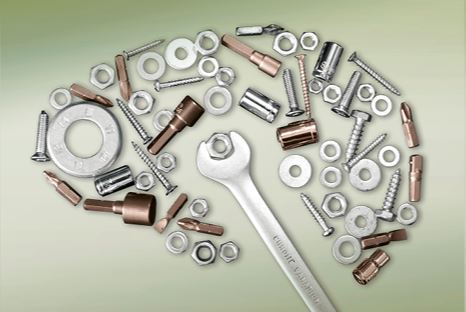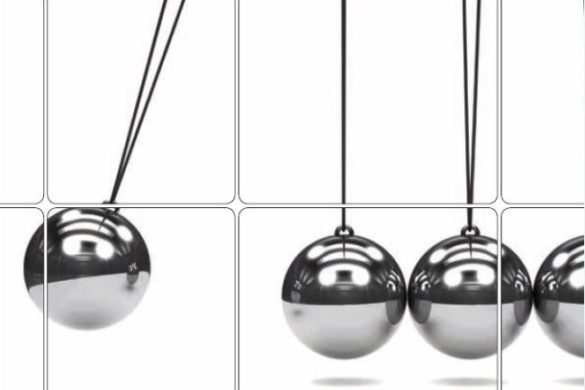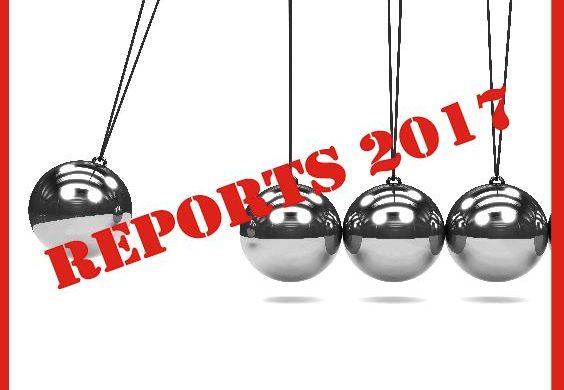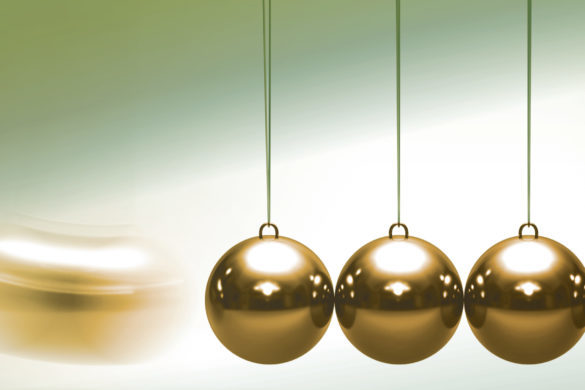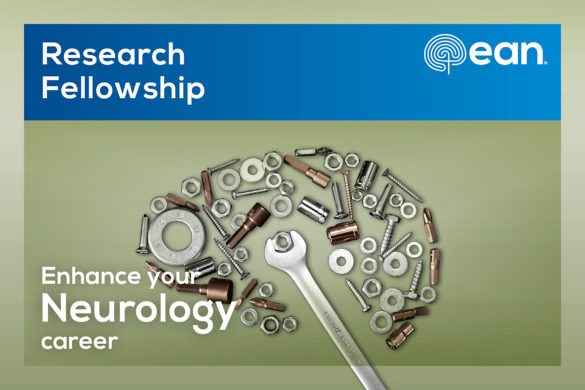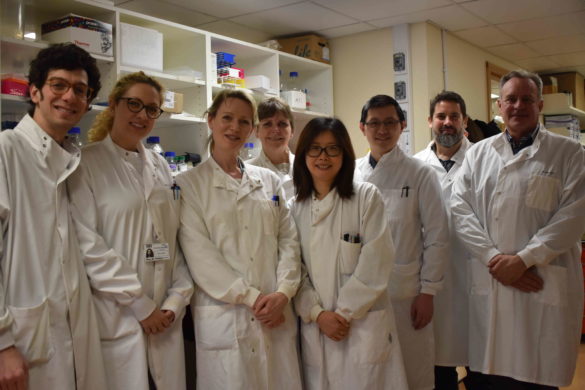Report from Tatiana Torgan from Russia visiting the Movement Disorders Unit, Neurology Department, San Pau Hospital, Barcelona, Spain under supervision of Dr Alexandre Gironell
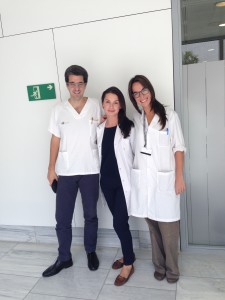 With great benefit and pleasure I had the practice of medicine in the department of movement disorders in Hospital the Sant Pau.
With great benefit and pleasure I had the practice of medicine in the department of movement disorders in Hospital the Sant Pau.
I started my education on 09 September and finished on 20 of October 2015.In the department, depending on the day of the week, patients were examined.
On Mondays, with Dr. Berta Pasqual I had a correction therapy in patients with advanced stage of Parkinson’s disease, including the use of modern methods such as: pump for intragastric administration of Duodopa, correction and selection program in patients with deep brain stimulation, to test for sensitivity to Apomorphine to determine further treatment strategy. On Tuesdays, I participated in the examination of patients with Huntington’s disease. I studied the use of special scales and new trends in the treatment of this disease. On Wednesdays i took part in examination and treatment of patients who needs of the application of Botulinum (focal, segmental dystonia, patients with Parkinson’s disease), carried out an injection of botulinum toxin, in some cases with EMG control. On Thursdays and Fridays I had examination and treatment of patients with various movement disorders, therapy selection, evaluation of programs and the results of SPECT DAT-scan with Javier Pagonabarraga and Alexandre Gironell.
During the time spent in the hospital, I learned about modern possibilities of examination and diagnosis of movement disorders, mastered the new scale used in patients with different types of movement disorders. Learn how to improve the effectiveness of treatment with new drugs. I learned about patient selection algorithms for high-tech help, to teached the program of select stimulator for already operated patients.
The staff of department are very friendly, positive and open to communication and learning. I got a great pleasure to work alongside a world-class professionals and people who love their work!
Report from Paul Muhle from Germany visiting the Gastrointestinal Sciences Research Center, Institute of Inflammation & Repair, University of Manchester, Salford Royal Hospital, UK under supervision of Prof. Shaheen Hamdy
Prof. Hamdy, Professor of Neurogastroenterology based in the Centre for Gastrointestinal Sciences, Institute of Inflammation and Repair, Faculty of Medical and Human Sciences, University of Manchester, gave me a warm welcome on my first day and would introduce me to his international team that currently consists of three research fellows and two PhD-students, all of whom come from different countries. After the necessary formalities such as getting keys to an office with my personal work desk and getting internet access were finished I was ready to start. From the first day on I was taken to the laboratory.
At first I got the chance to see single pulse transcranial magnetic stimulation (sTMS) on a patient eight months after stroke as a new protocol for a future study should be investigated on. We would check the peripheral response on the paretic side before and after training with a machine that is supposed to strengthen coordination of the affected extremities by repetitive moving towards a certain aim (e.g. a string hanging from the ceiling). It gave me a good start to see how the principle of single pulse TMS works and what kind of material was needed for it. As there was not yet a protocol developed for the planned study we would not get a proper result that we could compare to other results but it gave us a hint that the machine would need individual adjustment to the rehabilitation-status and force that could be performed by the study participant. Also this first contact to the TMS would give me a chance to see how a protocol is developed and what possible obstacles there might be.
Already on the next day another research fellow took me to the MRI to see an experiment using fMRI to find out about training effect of swallowing on patients with Parkinson’s disease during medical “OFF” and “ON” phases. The test person on that day was in a rather severe medical “OFF” after almost 16 hours without medication. He would still be very compliant and lay still in the MRI for about an hour. Results were not final by the time I would leave but it looked like the fMRI revealed a different activation pattern in the “OFF”-stage. I am looking forward on finding out about it by the time that this study will be finished.
On the following day I was once more taken to the laboratory to see what I originally wanted to come to Manchester University for: repetitive pulse transcranial magnetic stimulaiton (rTMS). The study would firstly test which of the hemispheres was the dominant one regarding swallowing using transcranial magnetic motor evoked potentials (TCmMEP). rTMS was hence performed at 1-Hz-frequency on the dominant hemisphere to induce a “virtual-lesion” in the pharyngeal motorcortex which former studies by the same group had shown (Jefferson et al. 2009). After that the test person would either be treated with rTMS (10 Hz) on the cerebellum or get a sham-stimulation to see what difference it would make regarding the results in TCmMEP within an hour after stimulation. In the four weeks I stayed in Manchester I was able to see this protocol performed thirteen times including myself as a test person. This gave me a chance to see what everyday obstacles can be. Usually the biggest problem is noise on the TCmEP-signal, either due to a limited contact of the pharyngeal catheter to the pharynx or due to a MRI-machine two doors away that eventually would work on times we used the TMS-machine. I was allowed to proceed the TCmMEP during this study myself so that I would get a feeling of how to handle the coil and what difference for example a different angle of holding the coil would make to the result. As I saw relatively many patients on whom the study was performed I got an idea of how different the results can be interindividually and intraindividually as all test persons took part on this study three times (one sham, one rTMS on the cerebellum dominant-side, one rTMS on the cerebellum non-dominant-side). Further on by taking part as a proband myself I could get the experience of the rTMS first hand. It is a rather unique feeling that I would describe as unpleasant but not really hurting. It is like someone would twitch you hard several times but no pain was left afterwards. If we got the chance to use a similar machine at Münster University this experience definitely helped me to describe it to a potential proband.
All in all I enjoyed my stay with Prof. Hamdys group a lot. My colleagues were very cordial, they would take me to every experiment that was on during my stay and they were very open to discuss any question that I had. Of course they would ask me about my surroundings and what we were researching on so that we soon got a very nice atmosphere and a place where I felt quite at home. Whenever there was no experiment running I had the chance to either discuss ideas for future studies or learning from former publications, e.g. how Prof. Hamdy managed to map the areas of swallowing in the human brain using TMS.
Of course there is always one thing or the other that is not just plainly perfect. In my case that was my own fault. I chose to stay at an apartment in the east of the city of Manchester. The tram connection looked quite close on the map so that I figured it would not take me too long to get to Salford Royal Hospital in the west of the city where the group is located. After all it took me about one and a half hours each way which I did not expect. Beside of that I am glad that I had the chance to stay with the group and I personally think that if we can arrange to have our own rTMS machine at Münster University Hospital eventually we would be able to conceptualize a study and with a little help we could get started on performing our own experiments.
Report from Natasa Pejanovic-Skobic from Bosnia and Herzegovina visiting the Department of neurology, Christian Doppler Clinic, University Clinic of Paracelsus Private Medical University of Salzburg, Austria, under the supervision of Professor Eugen Trinka.
Thanks to the EAN department-to-department program I got a great opportunity to spend 6 wonderful weeks at Department of neurology, Christian Doppler Clinic, Salzburg, Austria, which is a high level department with all modern technics, educational systems, and professional staff.
The principal aim of my visit was to extend my knowledge in the area of modern epilepsy diagnostics, medicament treatment and presurgical evaluation of pharmacoresistant patients. I had an opportunity to closely watch and perform by myself the interpretation of EEG records of patients in the EMU every day, as well as reviewing them with a competent senior doctor; here I must mention Dr. Markus Leitinger and thank him for his support and friendly supervision which gave me an exceptional opportunity to experience the everyday work at this epilepsy department.
Apart from EEG reading and long term monitoring, I was regularly attending scientific meetings at the Department of Neurology and also had a chance to present patients during Seizure conference-multidisciplinary meeting with discussions about most difficult clinical cases, which significantly improved my knowledge in this area. Being aware the fact that I only fully understand English, they made a lot of discussions in English instead of German which I really appreciated.
The management of the epilepsy patients on this multidisciplinary way provided me an insight into the diagnostic strategies and treatments: long term EEG monitoring, brain MRI-epilepsy protocol and post processing techniques, brain FDG-PET, ictal and interictal SPECT, MEG; up-to-date medicament therapy, as well as epilepsy surgery and VNS for farmacoresistant epilepsy patients.
I consider this EAN program as highly educational and of fundamental importance for the acquisition of ones own professional maturity. I received a general insight in the functioning of the Epilepsy Monitoring Unit, that will be introduced in my home institution at the beginning of the next year, so this is of substantial value for my own hospital and patients in my country.
During my free time on weekends I had the opportunity to explore beautiful Salzburg surrounding with all of its castles and fortresses, salt mines in Hallstatt, as well as make a two day trips to Graz and Wien.
At the end of my letter one more time I would like to express my gratitude to the whole EAN team for giving me such a great chance to make friendly relationships with my colleagues in Austria and gain this invaluable experience which encouraged me to implement their clinical approach in my own institution.
I’m very grateful to Professor Eugen Trinka for the invitation to his Department as well as the whole epilepsy team, seniors and residents (especially Dr M. Leitinger and Dr C. Neuray) that were very attentive and friendly, eagerly shared their experiences and made me feel as a long-standing member of their team during this six week period. So I hope to see all of the very soon.
Report from Bohdan Melekh from Ukraine visiting the Radiology department, Antwerp University Hospital, Belgium under supervision of Prof. Dr. Paul M. Parizel.
According to D-D program I spent with a big pleasure two months in University Hospital of Antwerp in department of radiology. My supervisor was very intelligent, professional and kind person Prof. P.M. Parizel. Under his leadership I had every day very intensive studying of radiology, which included not only fundamental radiology, but also advanced techniques. My daily tasks were:
- participation in a radiology and interdisciplinary rounds, teaching conferences and case-based presentations;
- taking part at making radiology reports;
- learning new advanced techniques of radiology;
- and in the end of fellowship I took part in writing scientific article.
The main goal of my stay was to expand knowledge in radiology. But I want to say, that I got more, than I expected. I met very intelligent and professional doctors, who shared their knowledge with me, saw highly professional collaboration of different department, european teaching process, how close professors can communicate with residents, doctors, patients. Also I got everything, what I needed in radiology. I am deeply impressed of my time in Antwerp. Prof. P.M. Parizel is very busy person, but he spent with me a lot of time. He teached me a lot in radiology and in life, also he showed me his city, introduced me all sightseeings of Antwerp. I appreciate that time with prof. Parizel. That time changed me a lot as a doctor and also as a person.
Now I am sharing my knowledge with my colleagues in hospital in Lviv. During two weeks we have already got a big progress in examination of patients with tumors. Our colleagues of neurosurgery department are very satisfied with our results. So, the first two weeks show, that this fellowship was very professional and useful for our patients.
In summary I want to say, that it was a great pleasure to spend in university hospital of Antwerp two months, I highly recommend prof. P.M. Parizel, his team and his department to a next winners of this exchange Program.
Sometimes you meet persons, who can change your life and open yours eyes to see new horizons of science and life. This person ti me is Prof. P. M. Parizel.
Report from Sashka Zhelyazkova from Bulgaria visiting the Department of Neurophysiology in the Danish Epilepsy Centre, Epilepsy hospital Filadelfia, Denmark, under the supervision of Professor Sandor Beniczky
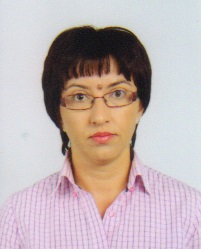 I was at the Danish Epilepsy Centre for six weeks under the supervision of Prof Sandor Beniczky. The Danish Epilepsy Centre, Filadelfia in Dianalund (Denmark) is the only tertiary center for epilepsy in Denmark.
I was at the Danish Epilepsy Centre for six weeks under the supervision of Prof Sandor Beniczky. The Danish Epilepsy Centre, Filadelfia in Dianalund (Denmark) is the only tertiary center for epilepsy in Denmark.
I was assigned to the neurophysiology department during my stay at the center. The Department has several VEEG rooms and EMU (Epilepsy Monitoring Unit) which can house around 4 patients.
Each day started off by reviewing VEEG recordings of EMU patients that had been recorded during the previous 24 hours. We also focused on co-relating the semiology of the seizures with the EEG recordings. Discussion sessions with Prof. Beniczky followed, where he helped to classify the seizures and write up preliminary reports for the clinicians.
The next two hours of my day were spent performing EEG (routine and sleep) for inpatients and outpatients alike along with the local technicians. I was able to brush up on the EEG and EMG electrode placements. We also performed different provocation techniques depending on the epilepsy syndrome. After which I spent the rest of my time scoring and interpreting the EEGs performed during the day with the neurophysiologists.
Every Thursdays, there were meetings organized with a team consisting of clinicians and neurophysiologists. These meetings were aimed at reaching an understanding between the clinical reports and EEG findings of vague and difficult clinical cases.
Every two weeks, we had sessions with a team consisting of physicians, neurophysiologists and neuropsychologists. At these sessions, the physicians presented their patients for presurgical evaluation. The details of the patients approved to undergo surgery were later on sent to Copenhagen where the same was discussed with a team of neurosurgeons specialized in epilepsy surgery.
I was given an opportunity to go through EEG recordings and reports that corresponded with various epilepsy syndromes (almost 300 recordings) and other paroxysmal events.
I had access to a wide range of books and atlases from the library, which further helped to enhance my study.
The entire training contributed a lot to my professional development. I was able to gain experience in a lot of areas that I rarely encounter in my day-to-day practice.
I would like to express my gratitude to everyone who has made this possible: the EAN for the financial support, my supervisors in Dianulund for their guidance, and especially to Prof. Beniczky and the entire team of the Neurophysiology department.
Report from Natalia Skripkina from Russioa visiting the Department of Neurology, First Faculty of Medicine, Charles University in Prague and General University Hospital in Prague, Czech Republic under supervision of Prof. Evžen Růžička
I was staying in Movement Disorders Center, Department of Neurology and Center of Clinical Neuroscience, First Faculty of Medicine, Charles University in Prague from 26/10/2015 to 4/12/2015. It was great to do an intership in this Center and to visit Prague. During my intership I had fine experience in examination, diagnosis and management of patients with common and rare movement disorders such as Parkinson`s disease, PSP, MSA-P and MSA-C, different variants of dystonia, essential tremor, Huntington`s disease, Wilson`s disease, hereditary ataxias, secondary and functional movement disorders. Every day I took part in work of outpatients Movement Disorders Center with my colleagues. I visited regular doctors meetings for discussing of interesting and unusual cases of movement disorders. I joined my colleagues during the rounds in the inpatients Neurological University Clinic. I attended the work of Clinical Neuropsychologists team, Physiotherapists team. I have looked at DBS operation in patient with Parkinson`s disease and management of patients after DBS. Every Friday I attended the BTX injections in patients with dystonia. I was invited at the meeting with famous specialist in Movement Disorders Joseph Jankovic when he visited Movement Disorders Center in Prague.
I admire the organization of work in Movement Disorders Department, doctor`s professional skills, productive collaboration with other specialists (MRI specialists, genetics, physiotherapists, neurosurgeons and so on) and their attention and care to patients. I wish to express many thanks to all the colleagues with whom I have worked during my visit to the Center: Prof. Evzen Ruzicka, MD, DSc, the Head of the Neurological Department and Center of Clinical Neuroscience 1-st Faculty of Medicine, Charles University; Prof. Jan Roth, MD, PhD, the Head of Movement Disorders Center; Prof. Robert Jech, Matej Slovak, Petr Dusek, Marketa Volfova, Tereza Serranova, Olga Umanova, Tomas Nikolai, Otto Gal, and others of my Czech colleagues.
I also would like to say my gratitude to EAN for the possibility to take part in DD Cooperation Programme and visit Neurological Department in Europe.




